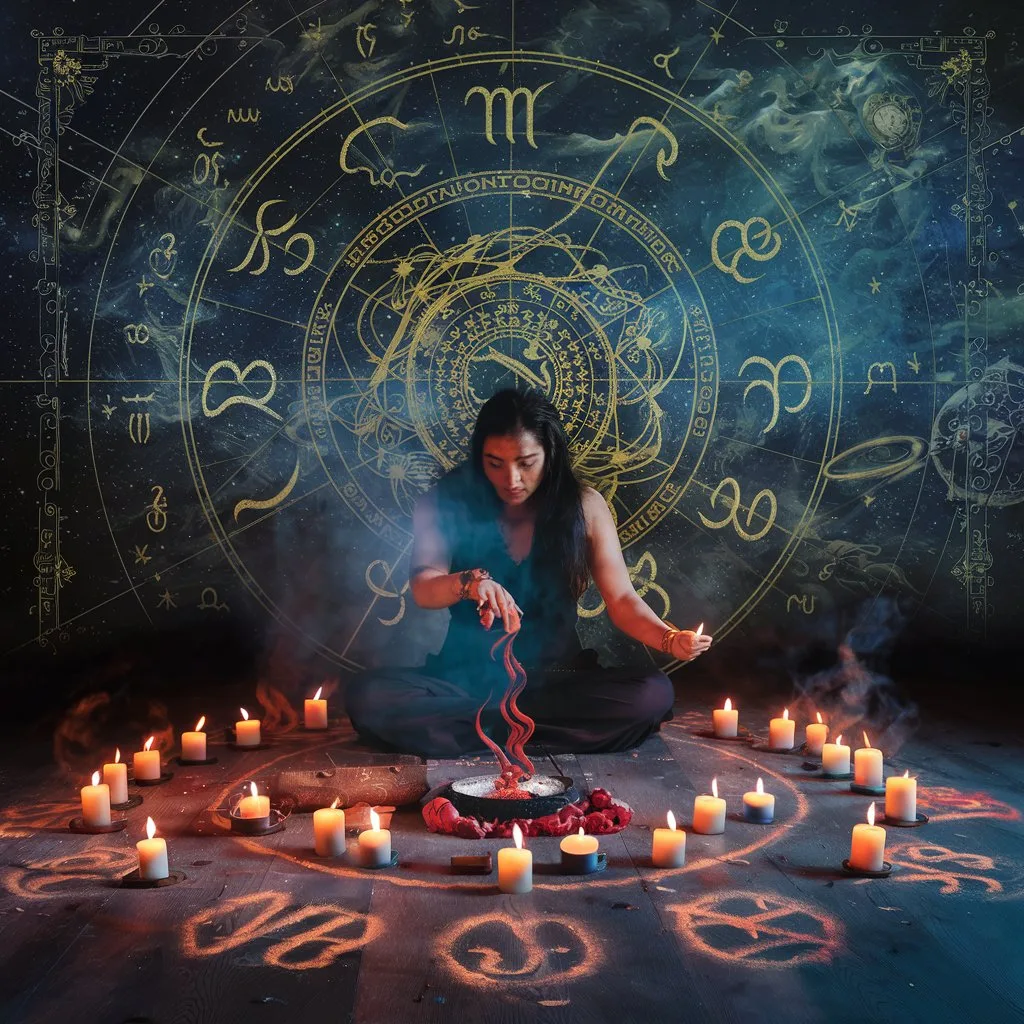The Mystique and Reality of Black Magic: Techniques, Practices, and Supplements
Black magic has always intrigued and terrified in equal measure. Its allure comes from its association with the mystical, the unknown, and the powerful. In this blog, we’ll delve into the world of black magic, exploring its definition, techniques, practices in Indian traditions, and even modern supplements that claim to harness its power.
What is Black Magic?
Black magic, often referred to as dark magic, involves the use of supernatural powers or magic for evil and selfish purposes. Its roots trace back to ancient times and various cultures, where it has been used to invoke malevolent forces, curse enemies, and manipulate outcomes in favor of the practitioner. Unlike white magic, which is intended for benevolent purposes, black magic is associated with harmful intentions and unethical practices.
Black Magic Techniques
Black magic techniques vary widely depending on the cultural context and the desired outcome. Here are some common methods:
- Spells and Incantations: These are verbal formulas that invoke spirits, deities, or other supernatural forces to carry out the practitioner’s will. Spells can range from simple chants to complex rituals.
- Hexes and Curses: These are specific types of spells intended to cause harm to others. They can be directed at individuals, families, or even entire communities.
- Sympathetic Magic: This technique involves using objects or representations (like dolls or photographs) to affect a person from a distance. The principle is that what is done to the object will be experienced by the person it represents.
- Divination and Scrying: These practices involve seeking knowledge of the future or the unknown, often through the use of tools like tarot cards, crystal balls, or mirrors.
- Necromancy: This is the practice of communicating with the dead to predict the future or obtain hidden knowledge. It’s one of the most feared and misunderstood black magic practices.
Indian Black Magic
India has a rich and complex tradition of black magic, known locally as “Kala Jadoo.” This form of magic often incorporates elements of Hinduism, Tantrism, and ancient tribal rituals. Some common practices include:
- Aghori Practices: The Aghori sadhus are known for their extreme rituals, which may involve meditation in cremation grounds, consumption of human remains, and other taboo activities intended to break the cycle of reincarnation.
- Tantric Rituals: Tantra in India has a dual aspect; while some practices are benign, others are considered dark and involve invoking powerful deities for personal gain or revenge.
- Mantra and Yantra: Specific mantras (sacred chants) and yantras (geometric designs) are used to invoke and control spiritual entities. These are often performed in secret and require precise knowledge and skill.
- Spirit Possession: Invoking spirits to possess a person or object is a common aspect of Indian black magic. This is often done to control or manipulate others.
Black Magic Supplements
In recent years, the market has seen a rise in supplements that claim to enhance one’s magical abilities or provide protection against black magic. These supplements often include a blend of herbs, minerals, and other natural ingredients believed to have mystical properties. Here are a few examples:
- Ashwagandha: Often referred to as Indian ginseng, this herb is believed to enhance mental clarity and psychic abilities.
- Shilajit: A mineral-rich resin used in traditional Ayurvedic medicine, Shilajit is thought to boost energy, improve focus, and offer protection against negative energies.
- Tulsi (Holy Basil): Known for its purifying properties, Tulsi is used to ward off evil spirits and cleanse the aura.
- Mugwort: This herb is used in various magical traditions for protection, prophecy, and enhancing psychic abilities.
- Black Tourmaline: While not a supplement, this crystal is frequently used in protective rituals to absorb negative energies and provide a shield against black magic attacks.
Conclusion
Black magic remains a fascinating and controversial topic. Its practices and beliefs vary widely across cultures, yet its allure continues to captivate those interested in the mystical and the unknown. Whether approached with reverence, fear, or scepticism, the world of black magic offers a glimpse into humanity’s age-old quest for power and understanding beyond the physical realm. As always, it’s crucial to approach such practices with respect and caution, acknowledging the profound impact they can have on individuals and communities.

